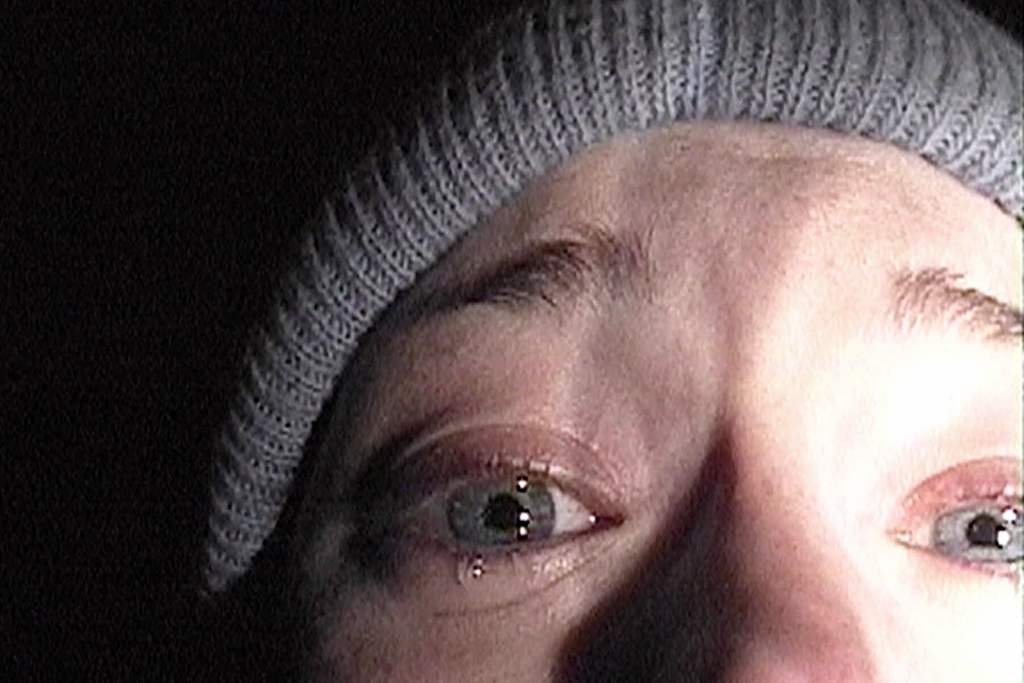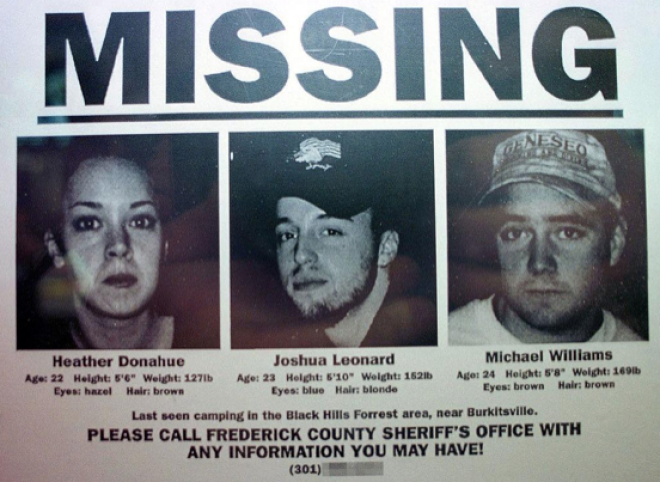Disappointed By ‘Blair Witch’? There’s Never Been A Better Time To Revisit The Original
This movie changed horror forever.

When The Blair Witch Project came out in 1999, Big Brother was getting its first season in the Netherlands; 17 years later, the biggest celebrity in the world is a reality TV star.
While the two might seem unconnected, The Blair Witch Project is considered by many to be the first movie to ever “go viral” on the internet. A year after its release, a mostly forgotten and critically canned sequel Book of Shadows was rushed out for Halloween and sunk at the box office. But enough time has now passed that The Blair Witch Project is recognised for its zeitgeist, and the 2016 reboot has gone all in on returning to its Black Hills Woods’ roots, using the original film almost as a blueprint.
Unfortunately, you’re more likely to walk away from the new film wanting to re-watch the 1999 original than feeling like you’ll never sleep again. While Blair Witch, aka The Woods, has its moments of paralysing terror, it’s more of a love letter to The Blair Witch Project, its impact on horror movies, horror storytelling and its place in history as the first “internet movie”.
–
A Film For The First Digital Natives
Taking advantage of their unknown actors, creators Eduardo Sánchez and Daniel Myrick promoted the original film as a documentary. They created a website (which still exists today, but now promotes the new film) featuring faux news coverage, police reports, biographies about the characters Heather, Mike and Josh, “missing” posters (which were also distributed at film festivals), photos of the police search, abandoned car and the mixtape the characters listened to.
IMDB even listed the actors as “missing, presumed dead”.

In 1999, it was hard to verify or disprove these “facts”. The word of mouth debate (both online and off-) over what was real and what wasn’t coupled with the film’s limited release made it a sensation. Artisan Entertainment acquired the rights to distribute the film and on its opening weekend took out a full page ad in Variety listing just the website URL and its “34,465,895 hits to date.”
University of Texas Film Institute professor Tom Schatz believes this use of “timing and new technologies” was the key to The Blair Witch Project’s success. Noting that this was the first movie to benefit from a viral marketing campaign, Schatz stated, “This was a phenomenon of both the emerging internet age and the emerging reality-television age”.
Carrie Lynn Reinhard, an assistant professor at Dominican University, says it also connected with an emerging millennial audience in a unique way: “The youth of that time were the first digital natives… What made the movie a phenomenon was how the combination of viral marketing and the found-footage style produced a movie that seemed meant for us.”
The collection of “evidence” fed out to fans through the campaign is not unlike recently created internet tulpas. The online myth of Slender Man emerged from a Photoshop competition and has turned into a full-blown, user-generated modern folktale on sites like Creepypasta. (No surprise that there’s already a slew of found footage Slender Man films, and Hollywood is having a go too.)
The marketing campaign around The Blair Witch Project is something PR companies have been trying to replicate ever since, particular in horror movies. From demon-summoning hoaxes for La Horca, to public service announcements for World War Z, horror movie marketing likes to get under our skin by injecting the horror into our real lives.
–
The Legacy Of Found Footage
On the verge of the millennium, The Blair Witch Project was a shock success. Sánchez and Myrick managed to scare the shit out of people worldwide with shaky camcorders, a production budget of $60,000 (it eventually grew to $500,000) and a mostly improvised script. Their idea was to make a horror movie like the found footage documentaries about Bigfoot, aliens and supernatural phenomena they grew up with, which they had always found much spookier than the usual horror movie fare.
Shooting documentary-style put viewers in Heather, Josh and Mike’s shoes and blinkered their awareness. As a viewer you knew bad stuff was going to happen, but in a Being John Malkovich-way, you were trapped in their bodies unable to do anything but witness it. “The trick is to make people feel trapped and alone,” Sanchez once said of his practice.
At the time, The Blair Witch Project was hailed far and wide as the scariest movie ever made. Yet, as Schatz points out, “[it] was a horror film with no special effects, no monsters, no violence or gore, and no real payoff”. It wasn’t contorted, projectile vomiting bodies making you clench the armrest — it was just sticks and rocks.
Though it had been done before (see: ‘80s classic Cannibal Holocaust), the found footage format of the film effectively launched a new line of horror franchises. It was cheap and the scares had a fresh authenticity. At the back of audiences’ minds was the possibility that this “accidentally captured” footage could really be happening somewhere in the world.
For Hollywood, The Blair Witch Project showed they could make fat stacks without out-laying the usual hundreds of millions of dollars. The Blair Witch Project’s $60,000 production budget, turned into $249 million in box office sales worldwide. Its horror descendants Paranormal Activity, [REC] and Cloverfield’s budgets were $28 million, $2 million and $25 million respectively — together they made more than $1 billion at the box office (and that doesn’t even count sequels).
As Scott Tobias wrote in his review of V/H/S (another horror franchise which also shared new Blair Witch director Adam Wingard), found footage has since “become to ‘00s and ‘10s what slasher movies were to the ‘80s.” Its popularity can only grow too, with what Tobias describes as the “21st-century obsession with self-documentation”. If Blair Witch was going to be rebooted at any time, it should be in 2016.
–
Walking In Circles With Blair Witch
Blair Witch features a new group led by James — the younger brother of Heather from the original film — who head into the Black Hills Forest 20 years later to look for clues for what happened to his sister and her buddies. Surprise, surprise: they lose their way.
This time around it’s thanks to some dodgy GPS (apparently these 20-somethings have never been to a music festival before where they’ve had no reception, so don’t foresee this as a potential issue). With nothing to do but make camp, they’re haunted by the same nighttime soundscapes, stick figures and stone heaps, and eventually (and predictably) end up in the same derelict house as the 1999 film.
This is where it ultimately fails. With minimal character development, it’s hard to see how these friends are chasing the original characters with so much naivety. Whether you believe in witchcraft or not it’s hard to believe that none of them stop to say, “well, something bloody got your sister last time, mate!” Particularly as they discuss the extensive and fruitless search for the original trio.
The film could have easily introduced new elements to its story without losing what was at its core. Slender Man didn’t always have tentacles and proxies — they were created by internet forums and Reddit threads. Much like its characters discover they’ve been walking in circles, instead of building on the legend like its internet horror counterparts, Blair Witch mines the original story and repeats the same patterns. Though it has moments of uneasiness, they also don’t pay off in the same way as they once did.
The Woods‘ surprise unveiling as Blair Witch at Comic-Con got hopes high for the reboot. The lack of hype fanfare, made it feel like a movie made with a spirit that would be faithful to the original, and Wingard and screenwriter Simon Barrett did do that… perhaps to a fault.
Maybe they felt that 17 years between films meant they had to draw direct lines between past and present. Unlike The Force Awakens original source material, a lot of people wouldn’t have seen The Blair Witch Project since its release. Blair Witch may serve better as a reminder to re-watch and marvel at the original than a film that will stay with you on its own. But as stories like Slender Man and series like Paranormal Activity show, there are a lot of narrative threads you can take with a horror story that don’t have to line up as sequentially as other genres.
A new story near Burkittsville is worth holding out for, though there are a lot of ways you can get lost in the woods.
–
Blair Witch is in cinemas now.
–
Anna is a writer and editor from Melbourne. She’s written for places like The Big Issue and Broadsheet, and used to be the editor of TheVine. @annahoran